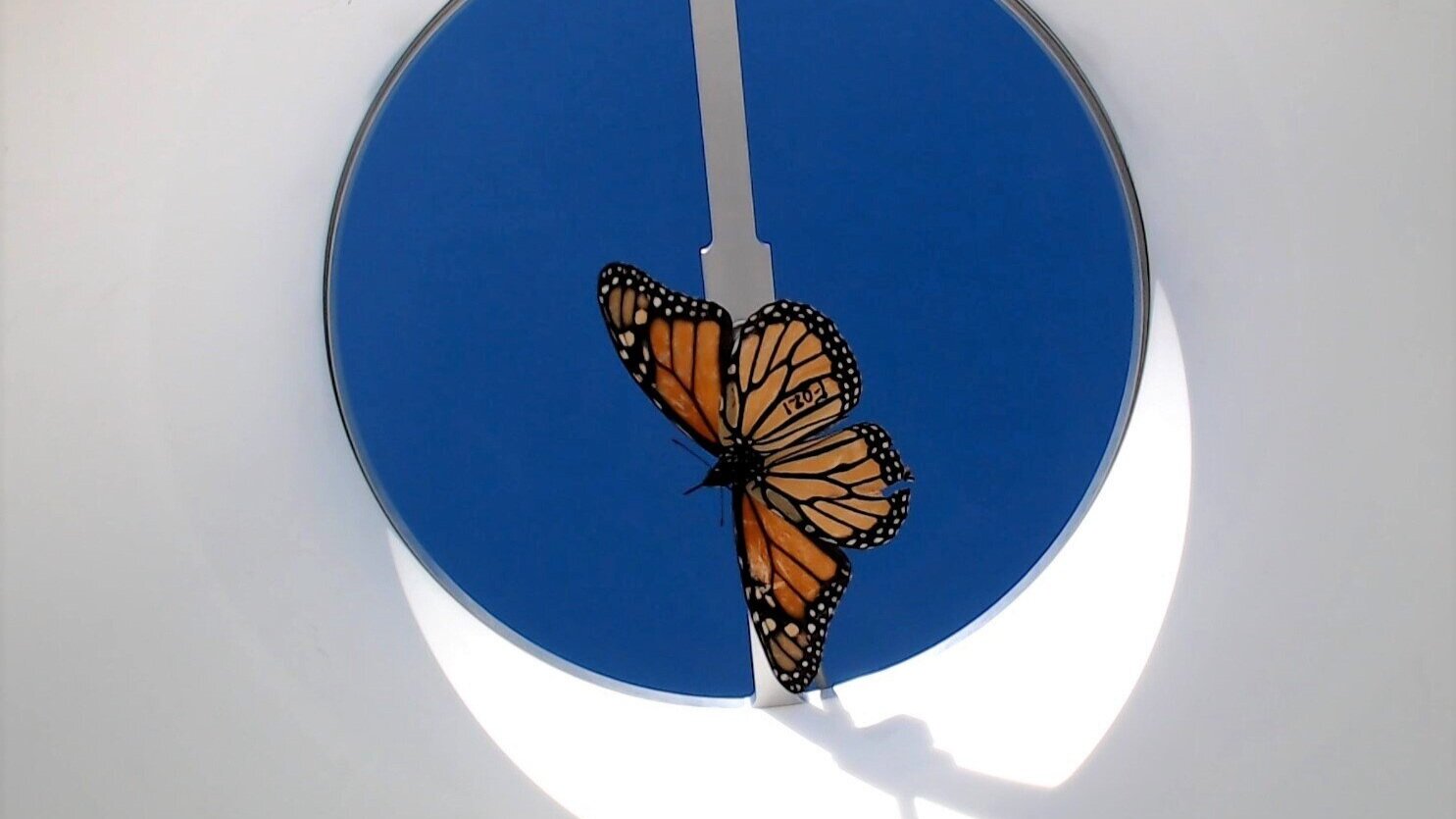Hand feeding & teaching butterflies to eat from artificial flowers
Butterflies do not eat from artificial feeders unless they learn - that happens when you teach them. While butterflies probably also learn to feed from the artificial feeders by watching older butterflies, if you want mortality to be low, I recommend teaching rather than hoping that they learn from other captive butterflies.
I am sharing a video I recorded a couple years ago in which I showed a colleague how I feed monarch butterflies being stored in envelopes (they are stored this way only because they are tethered for flight experiments). However, the principle of using a syringe to pull the proboscis into the center of the “flower” is the same for butterflies kept in a cage as well.
Hand feeding refers to the act of feeding a butterfly without a feeder. This is accomplished by putting a small drop of nectar from the tip of the syringe into the rolled up proboscis of the butterfly. You will see that they slowly drink the entire droplet, and then you can add another until they stop feeding.
For the syringe - you can order many different volumes and the needle can be a range of gauges. I tend to prefer 22 gauge needles with a 5 ml barrel. I definitely suggest a needle with a blunt end though.


